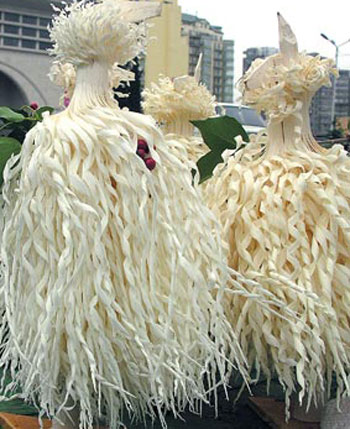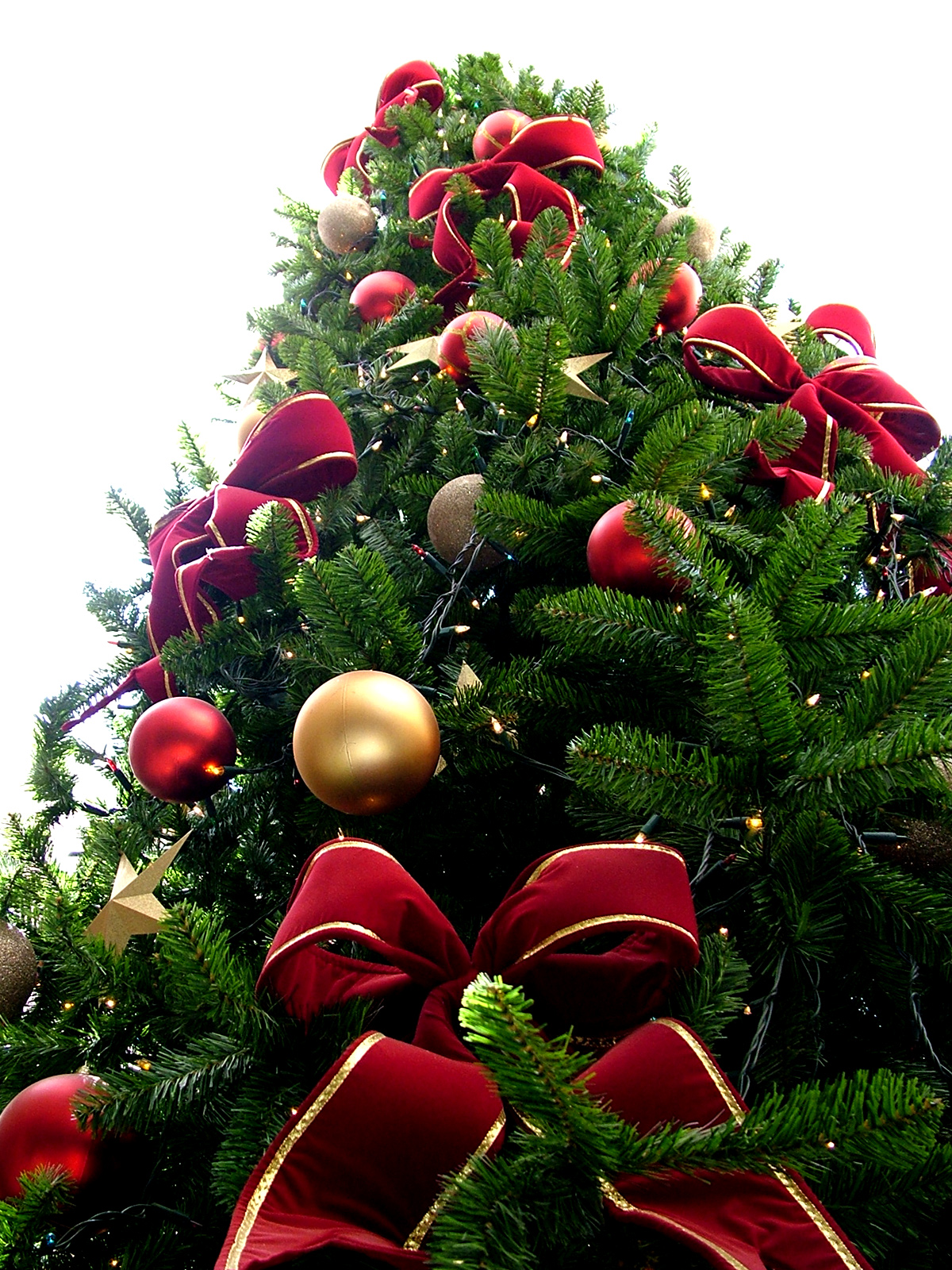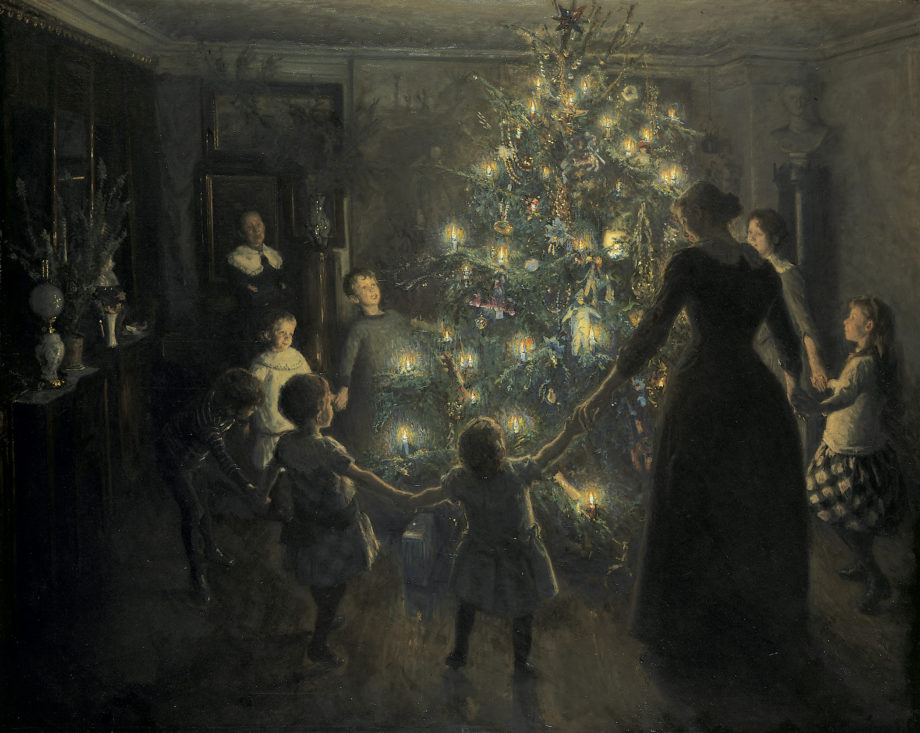|
Chichilaki
The chichilaki ( ka, ჩიჩილაკი) is a Georgian traditional Christmas tree made from dried hazelnut or walnut branches that are shaved to form a small coniferous tree. These pale-colored ornaments differ in height from 20 cm (8 in) to 3 meters (10 feet). Chichilakis are most common in the Guria and Samegrelo regions near the Black Sea, but they can also be found in some stores around the capital of Tbilisi. Chichilaki is currently proposed by the President of Georgia to be inscribed on the UNESCO Representative List of the Intangible Cultural Heritage of Humanity. Georgian tradition The traditional making of chichilakis is an important part of the Georgian Orthodox Christmas, which is observed on 7 January. The Georgians believe that the shaved tree resembles the famous beard of St. Basil the Great, who is thought to visit people during Christmas similar to the Santa Claus tradition. It is also believed that the chichilakis represent the tree of life, a symbol o ... [...More Info...] [...Related Items...] OR: [Wikipedia] [Google] [Baidu] |
Chichilaki Georgian Christmass Tree
The chichilaki ( ka, ჩიჩილაკი) is a Georgian traditional Christmas tree made from dried hazelnut or walnut branches that are shaved to form a small coniferous tree. These pale-colored ornaments differ in height from 20 cm (8 in) to 3 meters (10 feet). Chichilakis are most common in the Guria and Samegrelo regions near the Black Sea, but they can also be found in some stores around the capital of Tbilisi. Chichilaki is currently proposed by the President of Georgia to be inscribed on the UNESCO Representative List of the Intangible Cultural Heritage of Humanity. Georgian tradition The traditional making of chichilakis is an important part of the Georgian Orthodox Christmas, which is observed on 7 January. The Georgians believe that the shaved tree resembles the famous beard of St. Basil the Great, who is thought to visit people during Christmas similar to the Santa Claus tradition. It is also believed that the chichilakis represent the tree of life, a symbol of h ... [...More Info...] [...Related Items...] OR: [Wikipedia] [Google] [Baidu] |
Chichilaki
The chichilaki ( ka, ჩიჩილაკი) is a Georgian traditional Christmas tree made from dried hazelnut or walnut branches that are shaved to form a small coniferous tree. These pale-colored ornaments differ in height from 20 cm (8 in) to 3 meters (10 feet). Chichilakis are most common in the Guria and Samegrelo regions near the Black Sea, but they can also be found in some stores around the capital of Tbilisi. Chichilaki is currently proposed by the President of Georgia to be inscribed on the UNESCO Representative List of the Intangible Cultural Heritage of Humanity. Georgian tradition The traditional making of chichilakis is an important part of the Georgian Orthodox Christmas, which is observed on 7 January. The Georgians believe that the shaved tree resembles the famous beard of St. Basil the Great, who is thought to visit people during Christmas similar to the Santa Claus tradition. It is also believed that the chichilakis represent the tree of life, a symbol o ... [...More Info...] [...Related Items...] OR: [Wikipedia] [Google] [Baidu] |
Christmas Tree
A Christmas tree is a decorated tree, usually an evergreen conifer, such as a spruce, pine or fir, or an artificial tree of similar appearance, associated with the celebration of Christmas. The custom was further developed in early modern Germany where German Protestant Christians brought decorated trees into their homes. It acquired popularity beyond the Lutheran areas of Germany and the Baltic governorates during the second half of the 19th century, at first among the upper classes. The tree was traditionally decorated with "roses made of colored paper, apples, wafers, tinsel, ndsweetmeats". Moravian Christians began to illuminate Christmas trees with candles, which were often replaced by Christmas lights after the advent of electrification. Today, there is a wide variety of traditional and modern ornaments, such as garlands, baubles, tinsel, and candy canes. An angel or star might be placed at the top of the tree to represent the Angel Gabriel or the Star of Bethle ... [...More Info...] [...Related Items...] OR: [Wikipedia] [Google] [Baidu] |
Christmas Trees
A Christmas tree is a decorated tree, usually an evergreen conifer, such as a spruce, pine or fir, or an artificial tree of similar appearance, associated with the celebration of Christmas. The custom was further developed in early modern Germany where German Protestant Christians brought decorated trees into their homes. It acquired popularity beyond the Lutheran areas of Germany and the Baltic governorates during the second half of the 19th century, at first among the upper classes. The tree was traditionally decorated with "roses made of colored paper, apples, wafers, tinsel, ndsweetmeats". Moravian Christians began to illuminate Christmas trees with candles, which were often replaced by Christmas lights after the advent of electrification. Today, there is a wide variety of traditional and modern ornaments, such as garlands, baubles, tinsel, and candy canes. An angel or star might be placed at the top of the tree to represent the Angel Gabriel or the Star of Bethleh ... [...More Info...] [...Related Items...] OR: [Wikipedia] [Google] [Baidu] |
Inau
Inau or Inaw ( Ainu: イナウ or イナゥ) is an Ainu term for a ritual wood-shaving stick used in Ainu prayers to the spiritual world. They were used in most Ainu religious rituals, and were also frequently made to request assistance for hunting and childbirth. Some can be used multiple times, while others are destroyed immediately after one use. Their size and the direction in which they are shaved depends on which kamuy it is offered to and what is being requested. Etymology The word ''inau'' appears to be a loanword from other languages in the region, probably the Orok language of Sakhalin (''cf.'' Orok ''illau'' < *''ilawun''). It is most likely ultimately related to ''ila-''/(ila-mbi) "to blossom" and ''ilha''/ "flower." The |
Epiphany (holiday)
Epiphany ( ), also known as Theophany in Eastern Christian traditions, is a Christian feast day that celebrates the revelation (theophany) of God incarnation (Christianity), incarnate as Jesus Christ. In Western Christianity, the feast commemorates principally (but not solely) the Biblical Magi, visit of the Magi to the Christ Child, and thus Jesus Christ's physical manifestation to the Gentiles. It is sometimes called Three Kings' Day, and in some traditions celebrated as Little Christmas. Moreover, the feast of the Epiphany, in some Christian denominations, denominations, also initiates the liturgical season of Epiphanytide. Eastern Christians, on the other hand, commemorate the baptism of Jesus in the Jordan River, seen as his manifestation to the world as the Son of God. The spot marked by Al-Maghtas in Jordan, adjacent to Qasr al-Yahud in the West Bank, is considered to be the original site of the baptism of Jesus and the ministry of John the Baptist. The traditional dat ... [...More Info...] [...Related Items...] OR: [Wikipedia] [Google] [Baidu] |
Santa Claus
Santa Claus, also known as Father Christmas, Saint Nicholas, Saint Nick, Kris Kringle, or simply Santa, is a Legend, legendary figure originating in Western Christianity, Western Christian culture who is said to Christmas gift-bringer, bring children gifts during the late evening and overnight hours on Christmas Eve of toys and candy or coal or nothing, depending on whether they are "naughty or nice". In the legend, he accomplishes this with the aid of Christmas elf, Christmas elves, who make the toys in Santa's workshop, his workshop, often said to be at the North Pole, and Santa Claus's reindeer, flying reindeer who pull his sleigh through the air. The modern figure of Santa is based on folklore traditions surrounding Saint Nicholas (European folklore), Saint Nicholas, the English figure of Father Christmas and the Folklore of the Low Countries, Dutch figure of ''Sinterklaas''. Santa is generally depicted as a portly, jolly, white-bearded man, often with spectacles, wearing ... [...More Info...] [...Related Items...] OR: [Wikipedia] [Google] [Baidu] |
Christmas
Christmas is an annual festival commemorating Nativity of Jesus, the birth of Jesus, Jesus Christ, observed primarily on December 25 as a religious and cultural celebration among billions of people Observance of Christmas by country, around the world. A Calendar of saints, feast central to the Christian liturgical year, it is preceded by the season of Advent or the Nativity Fast and initiates the season of Christmastide, which historically in the West lasts Twelve Days of Christmas, twelve days and culminates on Twelfth Night (holiday), Twelfth Night. Christmas Day is a public holiday in List of holidays by country, many countries, is celebrated religiously by a majority of Christians, as well as Christian culture, culturally by many non-Christians, and forms an integral part of the Christmas and holiday season, holiday season organized around it. The traditional Christmas narrative recounted in the New Testament, known as the Nativity of Jesus, says that Jesus was born in Bet ... [...More Info...] [...Related Items...] OR: [Wikipedia] [Google] [Baidu] |
Basil Of Caesarea
Basil of Caesarea, also called Saint Basil the Great ( grc, Ἅγιος Βασίλειος ὁ Μέγας, ''Hágios Basíleios ho Mégas''; cop, Ⲡⲓⲁⲅⲓⲟⲥ Ⲃⲁⲥⲓⲗⲓⲟⲥ; 330 – January 1 or 2, 379), was a bishop of Caesarea Mazaca in Cappadocia, Asia Minor (modern-day Turkey). He was an influential theologian who supported the Nicene Creed and opposed the heresies of the early Christian church, fighting against both Arianism and the followers of Apollinaris of Laodicea. His ability to balance his theological convictions with his political connections made Basil a powerful advocate for the Nicene position. In addition to his work as a theologian, Basil was known for his care of the poor and underprivileged. Basil established guidelines for monastic life which focus on community life, liturgical prayer, and manual labor. Together with Pachomius, he is remembered as a father of communal monasticism in Eastern Christianity. He is considered a saint by ... [...More Info...] [...Related Items...] OR: [Wikipedia] [Google] [Baidu] |
UNESCO Intangible Cultural Heritage Lists
UNESCO established its Lists of Intangible Cultural Heritage with the aim of ensuring better protection of important intangible cultural heritages worldwide and the awareness of their significance.Compare: This list is published by the Intergovernmental Committee for the Safeguarding of Intangible Cultural Heritage, the members of which are elected by State Parties meeting in a General Assembly. Through a compendium of the different oral and intangible treasures of humankind worldwide, the programme aims to draw attention to the importance of safeguarding intangible heritage, which UNESCO has identified as an essential component and as a repository of cultural diversity and of creative expression. The list was established in 2008 when the 2003 Convention for the Safeguarding of the Intangible Cultural Heritage took effect. the programme compiles two lists. The longer, Representative List of the Intangible Cultural Heritage of Humanity, comprises cultural "practices and expressio ... [...More Info...] [...Related Items...] OR: [Wikipedia] [Google] [Baidu] |
Georgia (country)
Georgia (, ; ) is a transcontinental country at the intersection of Eastern Europe and Western Asia. It is part of the Caucasus region, bounded by the Black Sea to the west, by Russia to the north and northeast, by Turkey to the southwest, by Armenia to the south, and by Azerbaijan to the southeast. The country covers an area of , and has a population of 3.7 million people. Tbilisi is its capital as well as its largest city, home to roughly a third of the Georgian population. During the classical era, several independent kingdoms became established in what is now Georgia, such as Colchis and Iberia. In the early 4th century, ethnic Georgians officially adopted Christianity, which contributed to the spiritual and political unification of the early Georgian states. In the Middle Ages, the unified Kingdom of Georgia emerged and reached its Golden Age during the reign of King David IV and Queen Tamar in the 12th and early 13th centuries. Thereafter, the kingdom decl ... [...More Info...] [...Related Items...] OR: [Wikipedia] [Google] [Baidu] |
UNESCO
The United Nations Educational, Scientific and Cultural Organization is a specialized agency of the United Nations (UN) aimed at promoting world peace and security through international cooperation in education, arts, sciences and culture. It has 193 member states and 12 associate members, as well as partners in the non-governmental, intergovernmental and private sector. Headquartered at the World Heritage Centre in Paris, France, UNESCO has 53 regional field offices and 199 national commissions that facilitate its global mandate. UNESCO was founded in 1945 as the successor to the League of Nations's International Committee on Intellectual Cooperation.English summary). Its constitution establishes the agency's goals, governing structure, and operating framework. UNESCO's founding mission, which was shaped by the Second World War, is to advance peace, sustainable development and human rights by facilitating collaboration and dialogue among nations. It pursues this objective t ... [...More Info...] [...Related Items...] OR: [Wikipedia] [Google] [Baidu] |






.jpg)
.png)